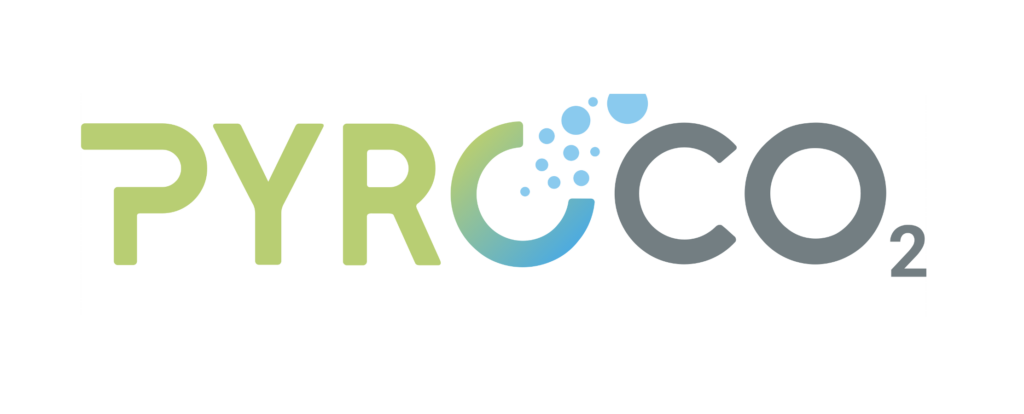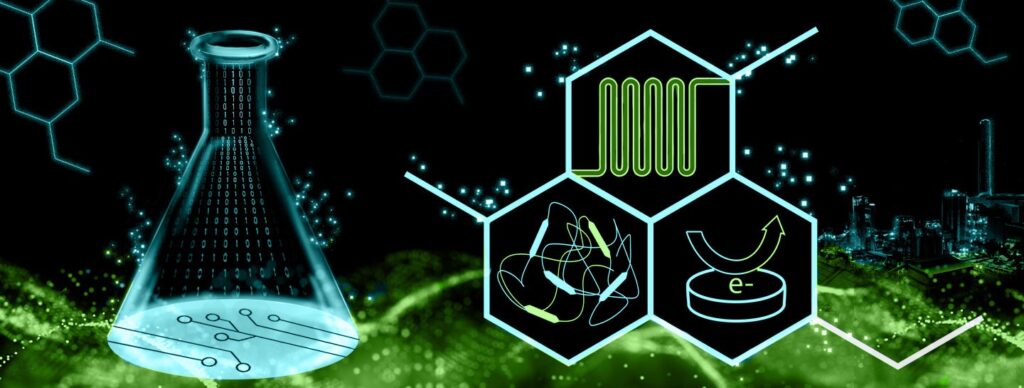
CatCO₂nvers
The core purpose of CATCO2NVERS is to reduce greenhouse gas emissions (GHG) from the biobased industry by developing five innovative and integrated technologies based on three catalytic processes (electrochemical, enzymatic, and thermochemical).
The project aim is to transform waste-CO₂ from two biobased industries into five added-value chemicals: glyoxylic acid, lactic acid, furan dicarboxylic methyl ester, cyclic carbonated fatty acid methyl esters, and bio-methanol, with application in the chemical, cosmetics, and plastic industries.

HICCUPS
The HICCUPS project proposes a resource-efficient solution to convert biogenic CO2 emissions from wastewater treatment plants into bio-based polymers for the packaging industry. The aim of the project is to develop an efficient process to electrochemically convert CO2 emissions from water treatment sludge into monomers and polymerise them to produce the bio-based polymer, polylactic-co-glycolic acid (PLGA), for the food packaging industry.
PLGA is a polymer with excellent water and gas barrier properties that is fully biodegradable and can be entirely produced from renewable resources, making it a promising candidate to replace fossil-based polyethylene. To demonstrate the potential of PLGA, packaging materials will be produced using PLGA film coated paper and moulded plastic, including coated paper for food packaging.

ICO2NIC
The ICO2NIC project focuses on promoting CO₂ capture and electrochemical conversion to transform industrial CO₂ waste into valuable feedstock, with the goal of reducing energy consumption, cutting CO₂ emissions, and enhancing economic sustainability. The project aims to capture and valorise waste CO₂, making CCU economically viable, and paving the way for substantial reductions in global emissions. ICO2NIC will combine advancements in CO₂ capture technology based on polymer membranes with a new gas diffusion electrochemical cell to convert CO₂ into formic acid. This formic acid will then be processed through biochemical methods to produce high-value goods and materials. ICO2NIC will create opportunities for substantial long-term CO₂ capture in the EU refinery sector, supporting decarbonisation efforts.

PyroCO₂
The PYROCO2 project will demonstrate the scalability and economic viability of carbon capture and utilization (CCU) using the innovative PYROCO2 bioprocess. Aim is to produce climate-positive acetone out of industrial CO₂ and renewable electricity derived hydrogen, as a platform for manufacturing chemicals and materials with a negative carbon footprint. The demonstrator plant to be built in the project will have a capacity of using 10,000 tonnes per year of industrial CO₂ as a raw material, equivalent to the annual CO₂ emissions of 2,200 conventional cars.

ShaPID
The Chair of Chemistry of Biogenic Resources (CBR) at the Technical University of Munich (TUM) Campus Straubing for Biotechnology and Sustainability works on the development of chemical and biotechnological processes for the conversion of plant biomass into chemical raw materials, biofuels, fine chemicals and functional materials. In our interdisciplinary research projects we combine expertise in protein biochemistry, molecular biology, microbiology, chemical catalysis with powerful instrumental analytics.

Vivaldi
VIVALDI project is developing an innovative, sustainable, and cost-efficient biotechnological solution to convert off-gas emissions from bio-based Industries into CO2-based chemicals. In this way, the industry’s greenhouse gas emissions will not only be reduced but will be used as a novel feedstock, lowering the dependency on fossil fuel imports and the exploitation of key resources such as energy, raw material, freshwater, and land.
